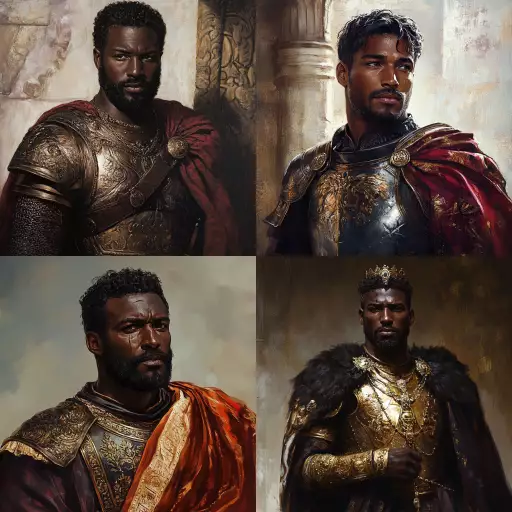Explore the Best AI Image Gallery

Beyond the Canvas: Wearable Tech and the Evolution of Artistic Expression
The realm of art has always been a space of innovation, constantly pushing boundaries and exploring new mediums. Today, wearable technology stands at the forefront of this evolution, offering artists and creators unprecedented tools to conceptualize, produce, and experience art in entirely novel ways.
A New Dimension of Creative Expression
Wearable tech, encompassing devices like smart glasses, haptic suits, and interactive clothing, allows artists to transcend the limitations of traditional canvases and mediums. Imagine a painter who can manipulate digital brushstrokes projected onto their own body, creating living, breathing artworks that respond to their movements. Or consider a musician who utilizes sensors embedded in their instruments to translate physical gestures into unique soundscapes, blurring the lines between performer and technological instrument.
Applications Across Artistic Disciplines
- Visual Arts: Wearable tech enables immersive installations, interactive sculptures, and augmented reality experiences that allow viewers to actively participate in the artwork.
- Music: Sensors integrated into instruments or clothing can create real-time sound manipulation, allowing musicians to explore new sonic territories and push the boundaries of performance.
- Dance: Wearable tech can track movement patterns, translating them into light displays, projections, or even interactive environments, creating a symbiotic relationship between dancer and technology.
- Performance Art: Artists can utilize wearable displays to project information, narratives, or visuals onto their bodies, enhancing the storytelling aspect of their performance and engaging audiences in a more profound way.
Ethical Considerations
As with any powerful technology, wearable tech raises important ethical considerations. Privacy concerns regarding data collection and usage must be addressed transparently. Furthermore, ensuring equitable access to these tools is crucial to prevent the digital divide from widening within the creative community.
Mitigating Potential Risks
- Data Transparency and Consent: Artists and creators should have clear understanding of how their data is collected, stored, and used by wearable tech platforms.
- Responsible Design Practices: Developers must prioritize user privacy, security, and well-being when designing wearable tech for artistic applications.
- Accessibility and Inclusivity: Efforts should be made to make wearable technology affordable and accessible to a diverse range of artists, regardless of their socioeconomic background.
Future Trends
The intersection of wearable tech and the creative industry is poised for continued growth and innovation. We can expect to see:
- Enhanced Sensory Experiences: Wearable devices will increasingly incorporate haptic feedback, olfactory stimulation, and other sensory elements, creating more immersive and engaging artistic experiences.
- AI-Powered Creativity: Artificial intelligence algorithms will play a larger role in assisting artists, generating ideas, suggesting creative solutions, and even co-creating artworks.
- Personalized Artistic Expression: Wearable tech will empower individuals to express themselves creatively in unique and personalized ways, blurring the lines between artist and audience.
Conclusion
Wearable technology is revolutionizing artistic expression, opening up a world of possibilities for creativity, innovation, and collaboration. As this technology continues to evolve, it will undoubtedly shape the future of art, enabling artists to push boundaries, explore new mediums, and connect with audiences in unprecedented ways.


](https://images.ai-img.art/thumbnails/150/4289d1230b86a96c4d556636c3167bed0ef38f850826549517e4e45db4d87bf7.webp)


](https://images.ai-img.art/thumbnails/150/c2c9c48b38fae37f0a457b80b084ed01ba803810fc8f488c8f610c03abc74049.webp)





](https://images.ai-img.art/thumbnails/150/008b5d5d49667cc2e93a5f8a8adfaa545963da99c39ff0901f5296294636400d.webp)












](https://images.ai-img.art/thumbnails/150/bddf3ae4a232290858389b933c866ad3be429ef2e25c23a9f4d7713ed6e44d0b.webp)






](https://images.ai-img.art/thumbnails/150/f67d9af3398150f2ab1bcf250717fea134275e2ca896252b54a4d9bb3719f9ac.webp)






](https://images.ai-img.art/thumbnails/150/f9584153b4cddd8c9fab611dc10247549b275c59bc173251e37d0935874f9deb.webp)


